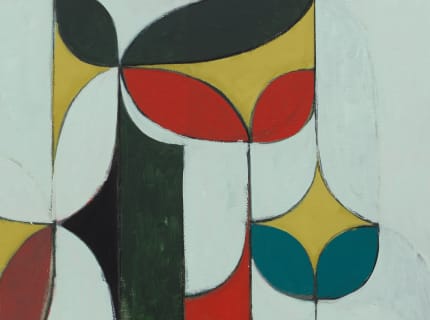I worked as a gallery attendant at Fort Worth’s Kimbell Art Museum back in 2005 when the exhibition Palace and Mosque: Islamic Art from the Victoria and Albert Museum was exhibited there. It was my introduction to Islamic art and was a comprehensive display of the V&A’s renowned Islamic art collection. I spent most of my shifts studying the pieces in the show. Ornamental vases, minbars, kaftans, and other lavishly decorated textiles were displayed in each of the galleries, and the Louis Kahn building’s western architectural elements contrasted with the ornate artifacts displayed in the show. Of all the remarkable things in Palace and Mosque, the Chelsea Carpet may have been the most remarkable. At around 10 x 17 feet, the 16th-century Iranian carpet, barely illuminated in the dimly lit gallery, was installed on a 45 degree angled ramp to accommodate a broader view.
Thinking back on Palace and Mosque, I can begin to understand how Kamrooz Aram’s Ornamental Compositions for Social Spaces takes shape in his current exhibition Focus: Kamrooz Aram at the Modern Art Museum of Fort Worth. He considers the Persian carpet for its parallels to painting, stating that they are “rectangular objects that we live with, display in interiors, and which often have content that is symbolic or otherwise, despite their reputation for being purely decorative.”
In his museum lecture about the Focus show, Aram shared an excerpt from his book Unstable Paintings for Anxious Interiors, titled the cover- up. He reveals an affinity for Cy Twombly’s paintings and characterizes Twombly’s approach as seeking “The uninhibited mark,” a kind of intuitive, unencumbered mark, unbridled by intent. The passage muses on the sights and sounds of the streets of Brooklyn and Istanbul, reveling in the idea of graffiti as ornament in the urban landscape. Aram then examines the practice of neutralizing graffiti as a form of labor that contains the uninhibited, intuitive mark.
...
Read full article at glasstire.com

